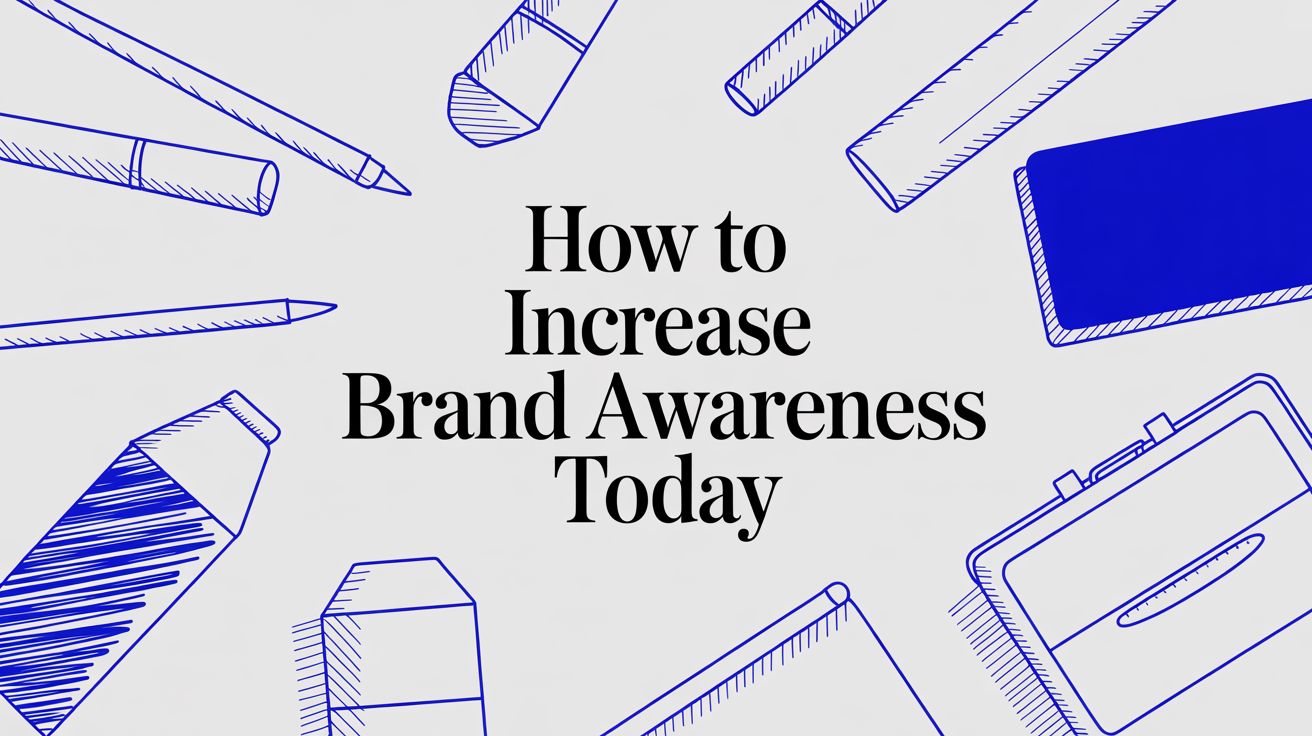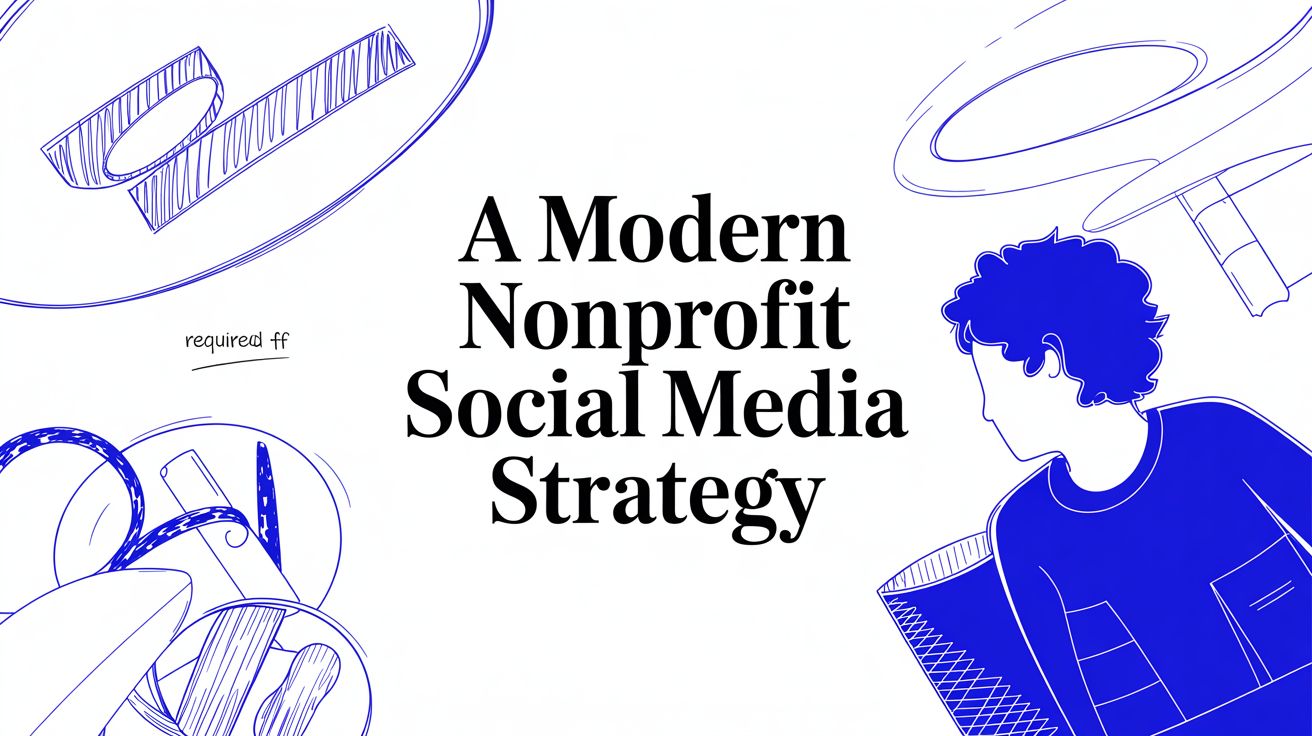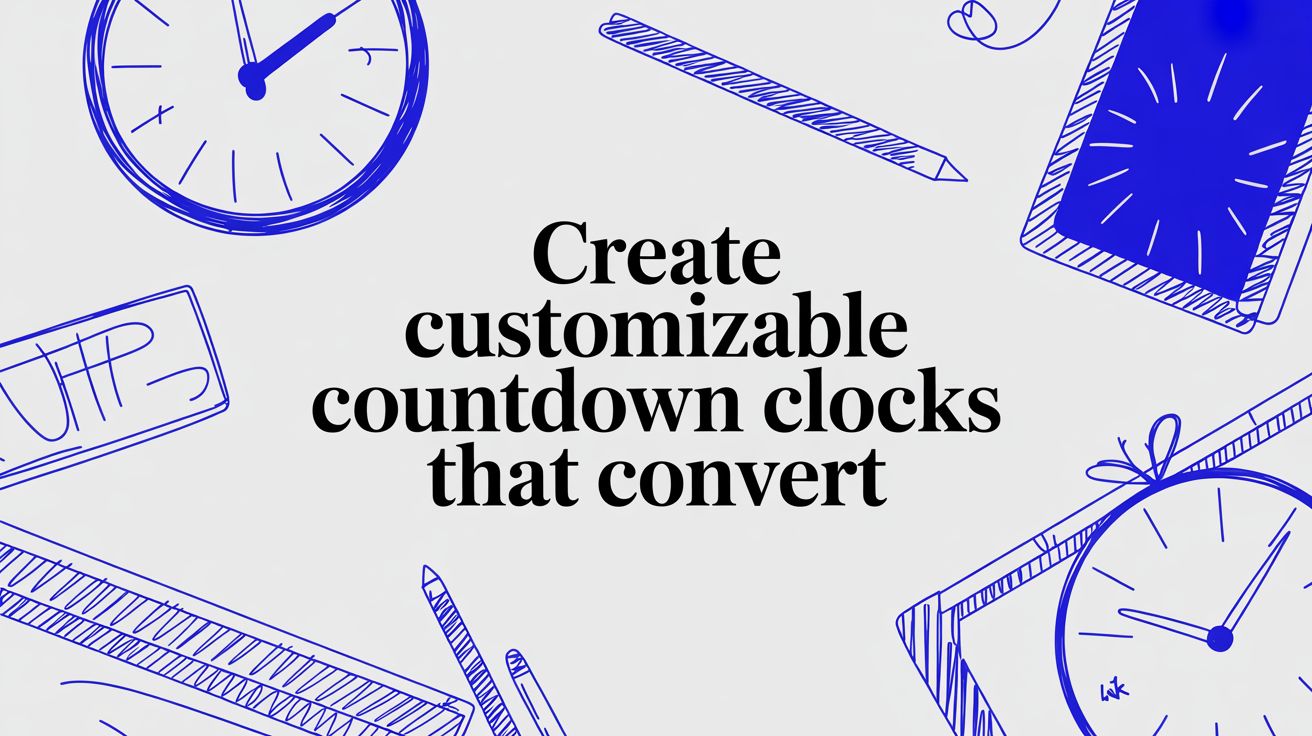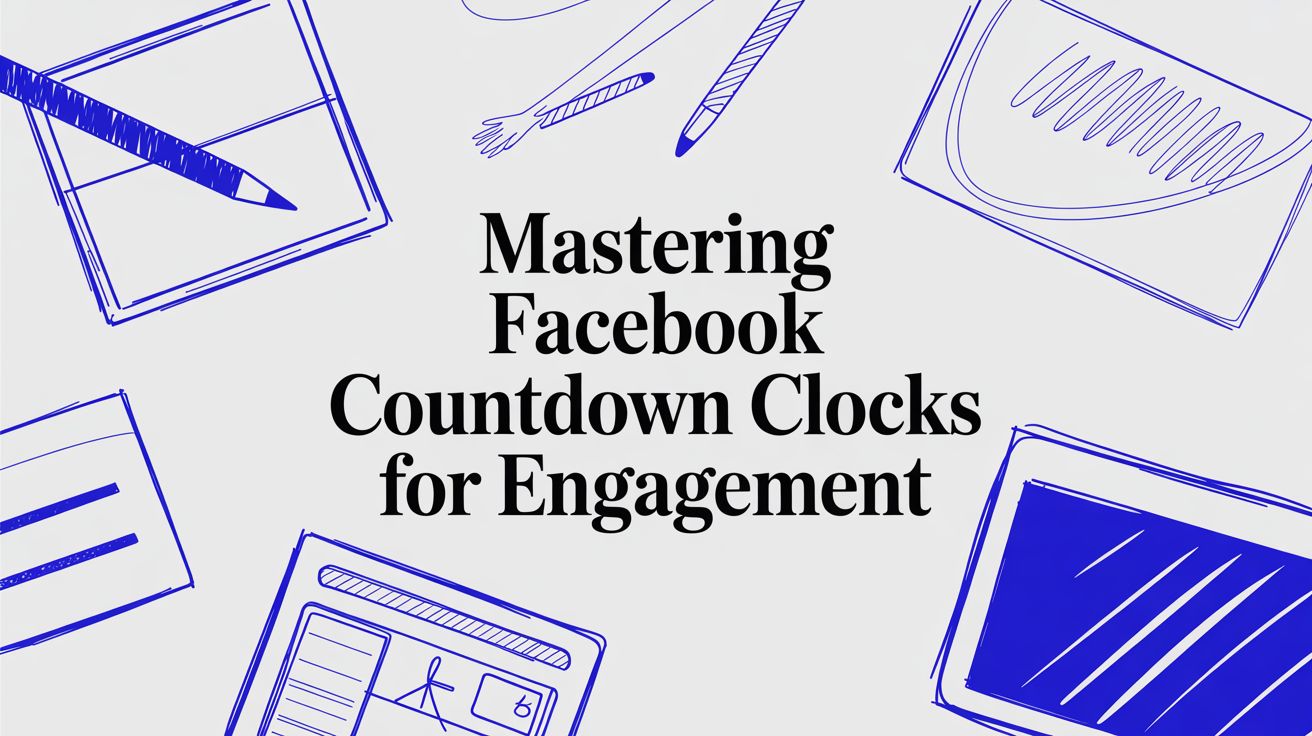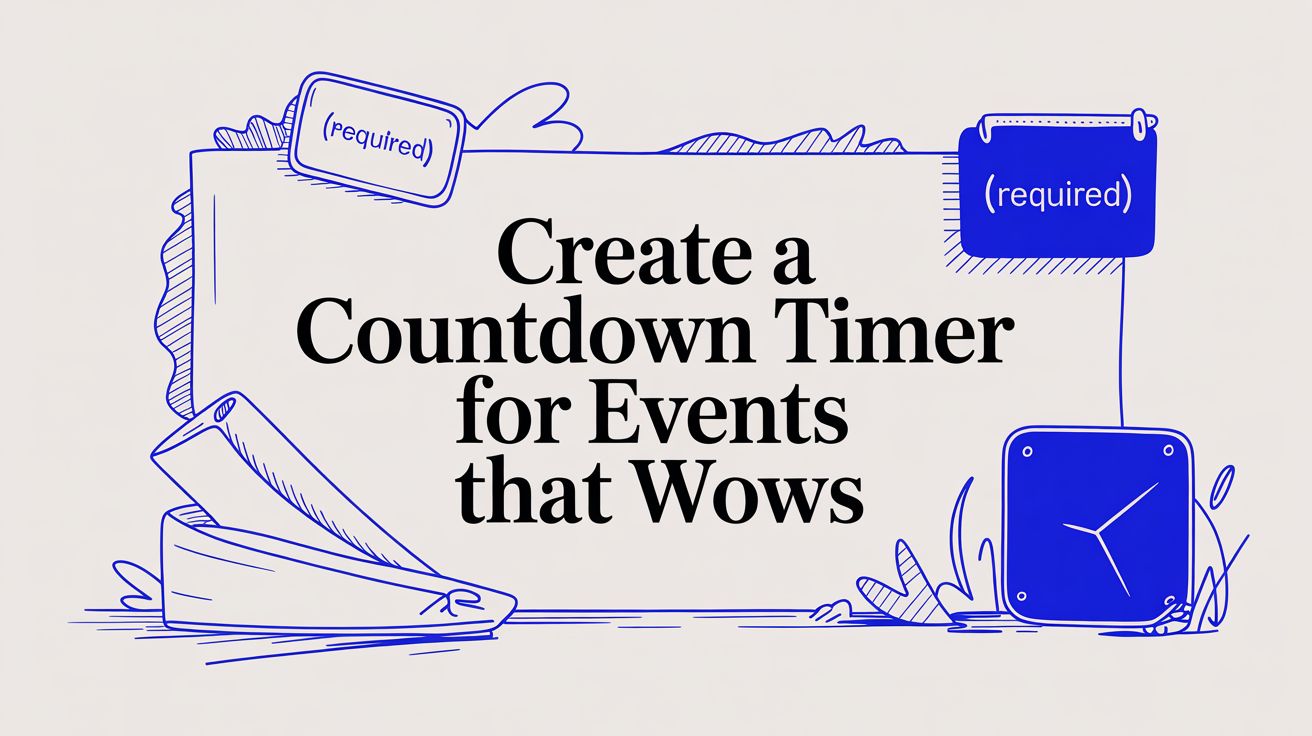Add Countdown Timer to Website | Boost Urgency & Sales
Learn how to add a countdown timer to your website quickly. Enhance engagement, create urgency, and increase sales with easy steps.
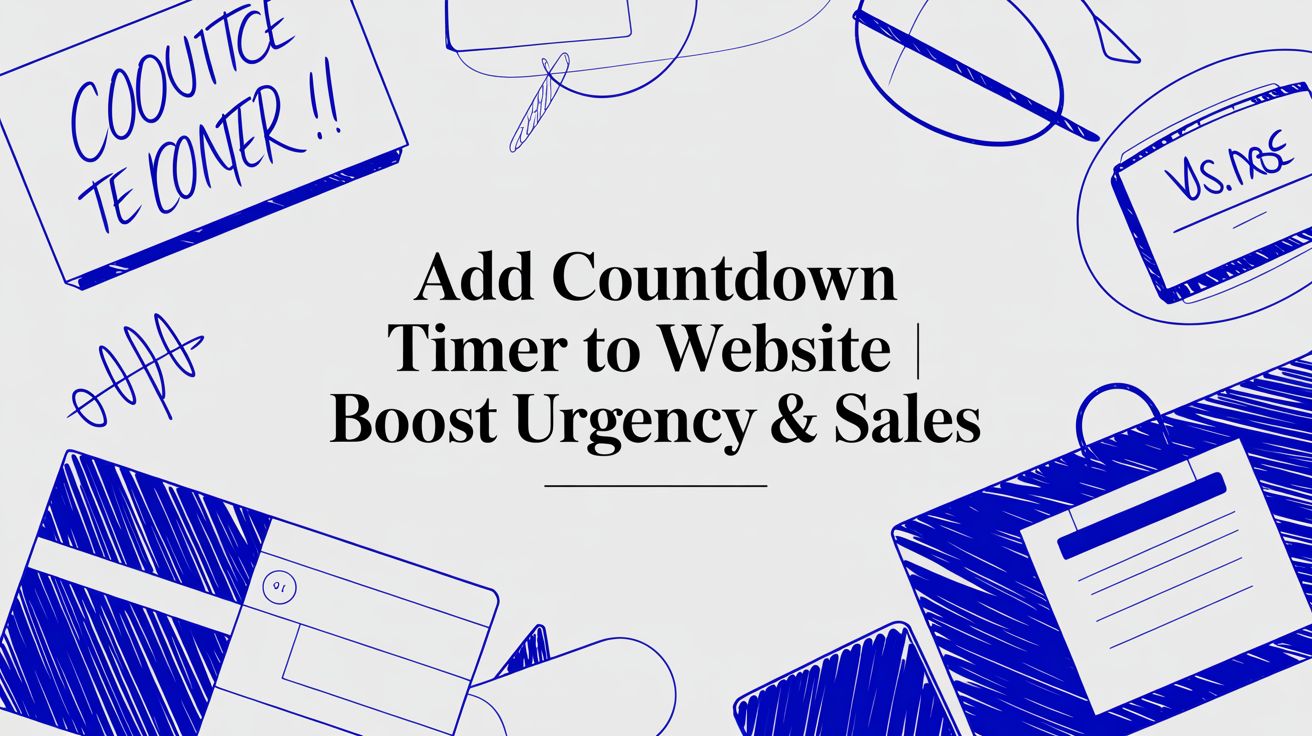
Adding a countdown timer to your website is way more than just a slick design trick. It’s a powerful psychological nudge that gets people to act. A well-placed timer plays on the universal fear of missing out (FOMO), pushing visitors to make a choice now instead of putting it off. This little bit of urgency can be a game-changer for boosting conversions, whether you're selling a product or promoting an event.
The Real Reason Countdown Timers Work
So, what's the secret sauce? Beyond just creating a little pressure, countdown timers work because they plug directly into how our brains are wired. They create a crystal-clear sense of scarcity and a hard deadline, which snaps visitors out of that passive "just browsing" mindset and into active decision-making mode.
This isn't about rushing your customers; it's about framing the value of what you're offering. A ticking clock is a subtle signal that an opportunity is limited, which automatically makes it feel more valuable. The impact of this is huge in marketing strategies like mastering the psychology of flash sales, where that tight timeframe is absolutely critical to success.
Tapping into Loss Aversion
One of the strongest psychological forces at play here is loss aversion. This is the simple idea that people are far more motivated to avoid losing something than they are to gain something of equal value. A countdown timer doesn't just show time running out—it visualizes the opportunity itself slipping away.
This infographic breaks down the key mental triggers that a countdown timer flips on.
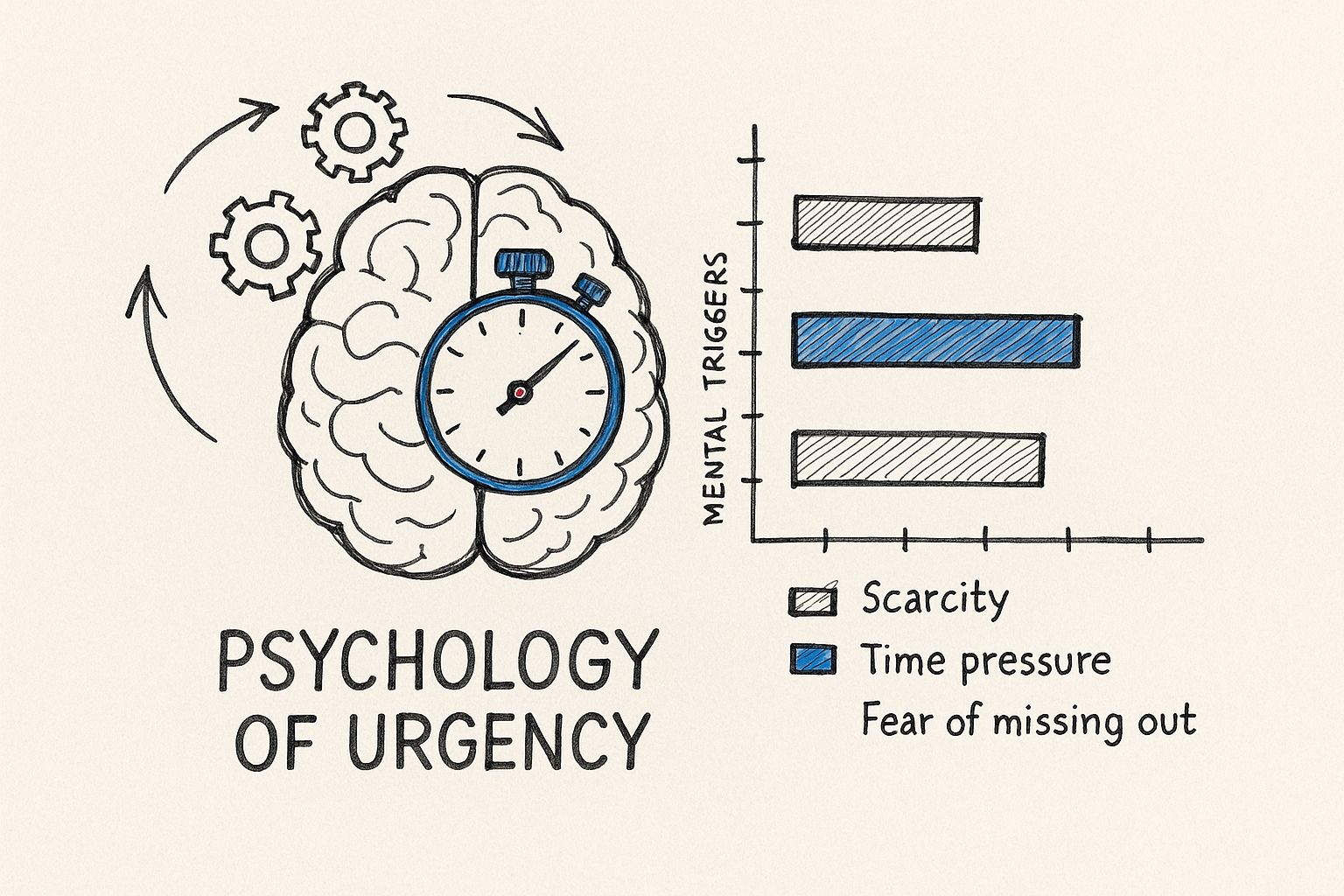
As you can see, the timer acts as a cognitive nudge, pushing the brain to prioritize the immediate deal over vague future possibilities. This is especially potent for time-sensitive offers you see all the time, such as:
- Early-bird ticket pricing for a conference
- Flash sales on your e-commerce store
- Limited-time free shipping windows
- Deadlines for webinar sign-ups
When these timers are tied to a real, genuine deadline, they can boost conversion rates by anywhere from 9% to 40%. The concept of scarcity increasing an item's desirability is well-documented, and a timer is the perfect way to make that scarcity tangible.
How to Choose the Right Countdown Timer Tool
Let's be honest, not all countdown timers are created equal. When you decide to add one to your website, you'll quickly find a ton of options out there, each with its own quirks and strengths. The best choice for you really boils down to your technical skill, what platform your website is built on, and what you’re trying to achieve with your marketing.
Generally, you can lump these tools into three buckets: dedicated plugins for platforms like WordPress, big all-in-one marketing platforms that have timers baked in, and simple widgets you can embed almost anywhere.
For instance, if you're running a Shopify store, you might start by exploring the app ecosystem. Checking out some free countdown timer Shopify apps is a smart first step to see what's possible without spending a dime.
Key Features to Look For
Beyond just counting down, a few key features can make or break your timer's success. Don't just grab the first free tool you find; think about what you actually need for your campaign. A freebie that doesn't fit your goals isn't much of a bargain.
Here are the features I consider non-negotiable:
- Mobile Responsiveness: A huge chunk of your traffic comes from phones. Your timer absolutely must look and work perfectly on smaller screens. No exceptions.
- Customization Options: To avoid looking tacked-on, you need the ability to change colors, fonts, and layouts. The goal is to make it blend seamlessly with your brand.
- Different Timer Types: A good tool should offer both fixed-date timers (think Black Friday sales) and evergreen timers that are unique to each visitor (like a welcome discount for new sign-ups).
A visually jarring, non-responsive timer can hurt your brand's credibility more than it helps. You're aiming for a smooth user experience that gently nudges people to act, not a cheap-looking gimmick that screams desperation.
Comparing Countdown Timer Solutions
To make things clearer, here’s a feature-by-feature look at different timer tools. This should help you pinpoint the perfect fit for your site without the trial-and-error headache.
| Feature | Dedicated Plugins (e.g., WordPress) | Marketing Platforms (e.g., OptinMonster) | Simple Widgets (e.g., Elfsight) | | :--- | :--- | :--- | :--- | | Ease of Use | Varies; can be complex to configure. | Often requires learning a larger system. | Typically very user-friendly and quick. | | Platform | Specific to one platform (e.g., WordPress). | Works across many platforms but is a full suite. | Works on any website that accepts HTML/JS. | | Customization | Usually offers deep customization options. | Good, but within the platform's ecosystem. | Good balance of simplicity and style options. | | Cost | Can be free, freemium, or a one-time fee. | Subscription-based, often at a higher price. | Usually a flexible subscription model. | | Other Features | Limited to the timer functionality. | Comes with popups, email capture, A/B testing. | Focused on the widget, but may offer others. |
Ultimately, the best choice balances cost against features and how easy the tool is to use. A simple embeddable tool like the Countdown Timer App gives you a straightforward way to create and customize a timer that you can place anywhere, with flexible options detailed on our pricing page. This approach gives you powerful features without locking you into a complex, expensive marketing platform.
Adding a Countdown Timer Without Touching Code
Alright, let's get to the fun part. You don't need to be a coding wizard or wrestle with confusing scripts to get a timer on your site. The secret is to add a countdown timer to your website using a tool that does all the technical heavy lifting for you. We’ll walk through how to use a simple, embeddable widget that gives you a professional-looking timer in minutes, not hours.
The real win with a no-code tool is that anyone can use it. It doesn't matter if your site is on WordPress, Squarespace, or is a completely custom build—the process is pretty much the same. You'll design the timer in an easy-to-use editor, and then just copy and paste a tiny bit of code where you want it to show up. It's so much easier than installing a clunky plugin that could slow your whole site down.
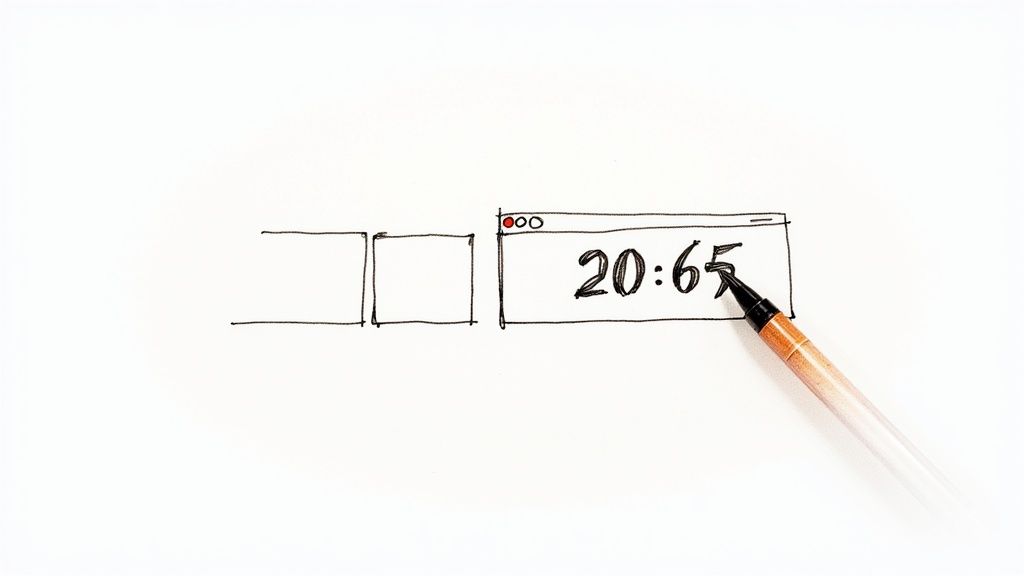
Setting Your Offer End Date
First things first: you need a deadline. This is the single most important decision because it anchors your entire campaign. Are you running a 72-hour flash sale that wraps up Friday at midnight? Or maybe it's an early-bird discount for an event that ends on the 31st?
Get specific with your date and time. A powerful countdown needs a concrete finish line to create real urgency. A fuzzy "ends soon" message just doesn't have the same psychological kick.
Once you’ve locked in your end date, you can jump into the design. A great place to start is to create a countdown with a tool like the Countdown Timer App, which has a super intuitive interface to get this set up.
Matching the Timer to Your Brand
Nothing screams "amateur" like a timer that clashes with your website's design. It can instantly erode trust. The goal is to make it look like a natural part of the page, not some random element you just dropped in.
Here are a few key things to get right:
- Brand Colors: Use the exact hex codes from your brand’s color palette for the timer's background, numbers, and labels.
- Typography: Pick a font that matches or complements the ones already on your site. Consistency is everything for a seamless look.
- Layout and Size: Tweak the timer's dimensions so it fits perfectly where you plan to put it, whether that's a big banner up top or a small block on a product page.
Remember, the best countdown timer doesn't just create urgency—it reinforces your brand identity. It should feel like a natural, helpful guide for your visitors, not a jarring, high-pressure sales tactic. This thoughtful integration is what separates a successful campaign from one that feels cheap.
Customizing Your Timer for Maximum Impact
An out-of-the-box timer slapped onto a website often screams "amateur." It can look cheap and, frankly, hurt visitor trust more than it helps. To make your countdown feel like a natural, intentional part of your website, you've got to dive into the customization settings. This is where you transform a generic widget into a powerful branding tool.
The goal is to make the timer blend in so seamlessly that it looks like your web designer built it from scratch just for that page. This all starts with getting the colors just right. Don't guess—use the exact hex codes from your brand's style guide for the timer’s background, digits, and labels.
A great little hack for this is using a tool like Canva's color palette generator. You can upload your logo or a key brand image, and it'll pull the exact colors for you.
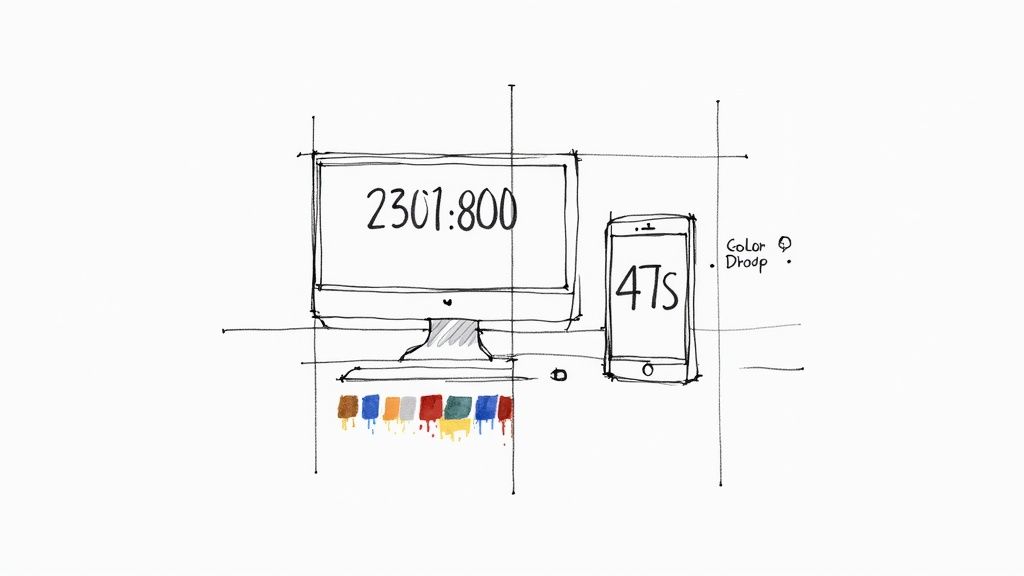
Using a tool like this ensures your timer's colors are perfectly in sync with your site's existing design, creating a smooth, professional look.
Fine-Tuning the Visual Details
Beyond just colors, a few other visual details play a huge role in how your timer is perceived. I've seen a clashing font completely ruin the vibe of an otherwise well-designed page.
Here’s what to focus on:
- Typography: The font choice is critical. Select one that either matches or complements your website's main headings and body text. Consistency is key to reinforcing your brand identity.
- Layout and Sizing: Think about where the timer lives. Is it in a big header banner? Make it bold and easy to read. Is it tucked onto a product page? It can be more subtle. Adjust the timer’s dimensions to fit its container perfectly.
- Mobile Visibility: This is a non-negotiable. Always, always check how your timer looks on a phone. The numbers need to be legible and the layout shouldn't break or look awkward on a smaller screen.
A quick pro tip: your timer's copy is just as important as its design. Changing the label from a generic "Time Left" to a benefit-driven "Free Shipping Ends In:" can dramatically boost its effectiveness. You're connecting the urgency directly to the value for the customer, which is a much stronger motivator.
Don't Break Customer Trust with Your Countdown Timer
Let's be real: urgency is a fantastic marketing tool. But there's a razor-thin line between creating genuine buzz and just being shady. When you drop a countdown timer on your site, its power comes from one thing and one thing only: authenticity. You're trying to build a loyal customer base for the long haul, not just trick a few people into buying with sketchy tactics.
The biggest face-palm moment for me is seeing a brand use a fake timer—you know the kind, the one that magically resets every time you refresh the page. This doesn't just feel cheap; it actively screams to your customers that you think they're gullible. Newsflash: they're not. People are savvy and can spot these tricks from a mile away, and it instantly shatters your brand's credibility.
Honesty Always Wins
If you want your timer to work, it has to be tied to a real, concrete deadline. The clock should be ticking down to a genuine end of an offer, not just some arbitrary pressure tactic you cooked up.
Here are the absolute must-dos for using a timer the right way:
- Keep it Real: Never, ever use a timer that resets for each visitor or loops forever. If your sale ends at midnight, it needs to end at midnight. No exceptions.
- Offer Real Value: The deal attached to that timer—whether it's a discount, free shipping, or a cool bonus item—has to be something your customer actually wants.
- Be Crystal Clear: Make sure your visitors know exactly what they stand to lose when that timer hits zero. Vague offers just cause confusion, not conversions.
Think about it this way: a staggering 68% of shoppers now say they feel manipulated by those endless countdown timers. When customers catch a site being deceptive, that trust is gone, and it's incredibly hard to win back. You can find more details on these findings on countdown timer effectiveness from GrowthSuite.net.
The bottom line is this: countdown timers absolutely still work, but only when they're honest and offer real value. Otherwise, you're just pushing people away. Treat your audience with respect, and they’ll return the favor with their loyalty and their business.
Common Questions About Website Countdown Timers
Once you get a countdown timer live on your site, a few questions almost always pop up. It’s one thing to get the code embedded, but it's another to use it well without hitting the usual snags. Let's walk through some of the most common things people ask right after setup.
One of the biggest worries is performance. Will this thing slow down my page load times? A well-built timer is designed to be incredibly lightweight, meaning its impact on your site's speed should be next to nothing. Just make sure you’re using a reputable tool so you know the code is clean and optimized.
Another big question is what happens when the clock finally hits zero. Any decent timer app should give you a few options here. You can have the timer simply vanish, hide the entire section it's in, or—my personal favorite for preserving the user experience—redirect visitors to a different page, like a "Sorry, this offer has expired!" landing page.
Best Placement and Performance
People often wonder where the best spot is to put their timer for maximum impact. While every site is different, there are a few tried-and-true locations that consistently deliver results.
The timers that perform best are always highly visible, usually placed in the header, the cart, or as a popup. They work because they clearly signal that a real benefit is about to expire. When you pair an accurate, trustworthy deadline with a strong call to action, you create a powerful conversion driver. You can dig into more effective timer strategies on WiserNotify.com.
The key is to be visible without being annoying. A banner at the top of the page is a classic for a reason—it catches the eye immediately without disrupting the user's journey. Placing one directly on a product page near the "Add to Cart" button is another powerful tactic.
For more technical troubleshooting and specific setup questions, our comprehensive FAQ page for countdown timers provides detailed answers to help you resolve any issues quickly.
Ready to create a professional, no-code countdown timer that captivates your audience? With the Countdown Timer App, you can design and launch a fully customized timer for your website or Facebook page in minutes. Start boosting urgency and driving sales today by visiting https://www.countdown-timer.app.

